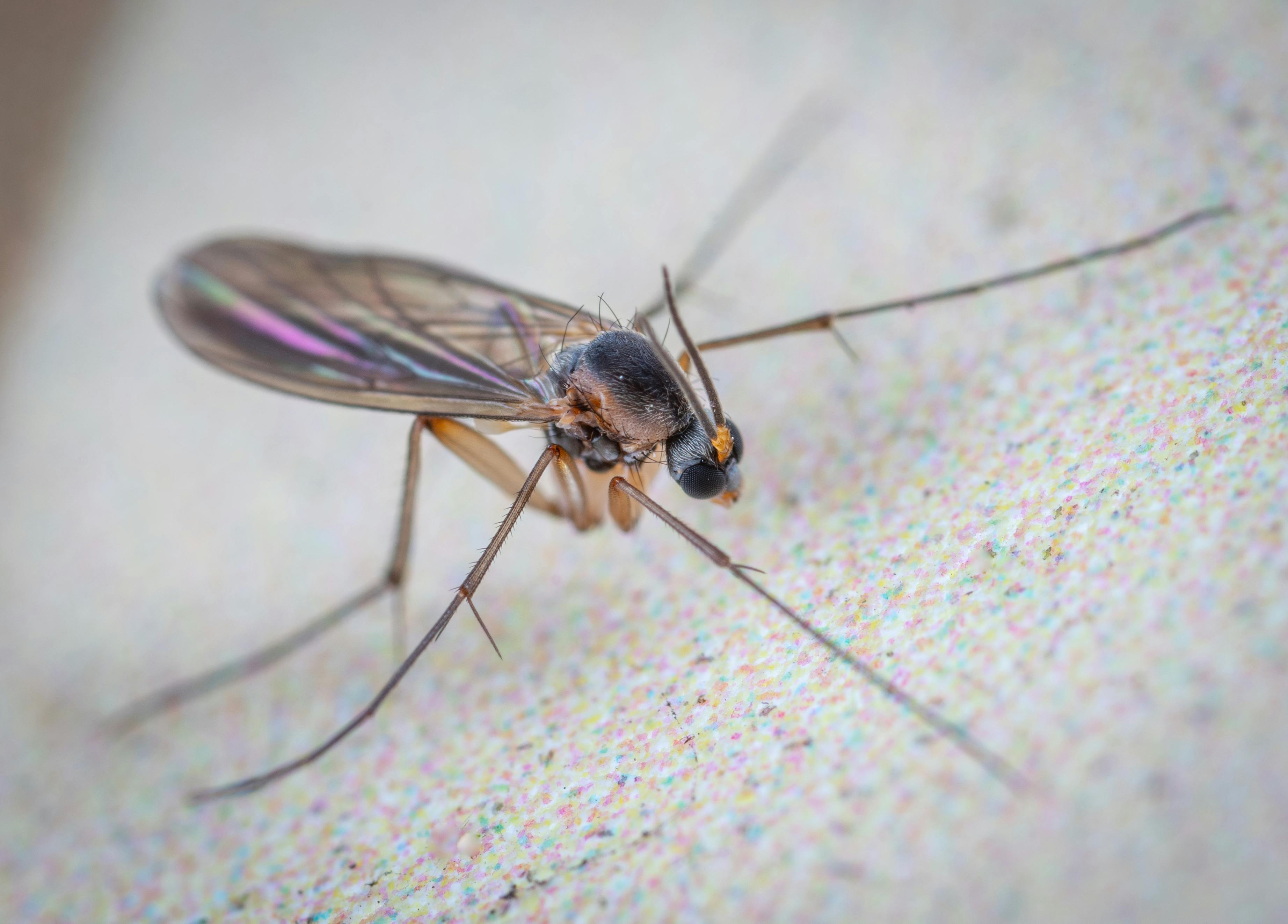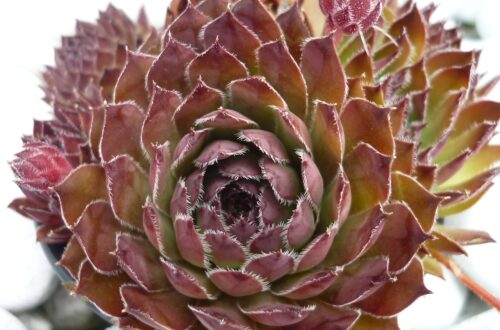
How to Get Rid of Gnats on Succulents
Have you ever noticed tiny, annoying flies buzzing around your succulents? These pesky little insects are likely gnats, and they can be a real nuisance for plant lovers. While they may seem harmless, gnats can actually cause damage to your succulents by laying eggs in the soil, leading to root problems and stunted growth. Fortunately, there are effective ways to get rid of gnats and prevent them from returning. With the right approach, you can keep your succulents healthy and gnat-free.
Understanding Gnats and Their Impact on Succulents
Before tackling the problem, it’s important to understand what gnats are and why they target succulents.
What Are Gnats?

Gnats are small, flying insects that resemble tiny mosquitoes. The most common type of gnats found around succulents are fungus gnats.
- Life Cycle: Fungus gnats lay their eggs in moist soil, where the larvae feed on organic matter and plant roots. This can lead to root damage, particularly in young or delicate succulents.
- Why They Are Attracted to Succulents: Gnats are drawn to damp, nutrient-rich soil. Overwatering or using soil that retains too much moisture can create the perfect environment for these pests.
Signs of a Gnat Infestation
Identifying a gnat infestation early can help you address the issue before it gets out of control.
Visible Gnats
One of the most obvious signs of a gnat problem is seeing the tiny flies around your succulents.
- Where to Look: Gnats are often seen hovering around the soil, especially after watering. They may also be found on windows or near light sources, as they are attracted to light.
- Behavior: Unlike fruit flies, gnats tend to fly in a more erratic pattern and are usually found near plants rather than food sources.

Soil Condition
Gnats are attracted to certain soil conditions, and changes in your succulent’s soil can be a clue.
- Moisture Levels: If the soil is consistently damp or waterlogged, it’s more likely to attract gnats. Succulents generally prefer well-draining soil that dries out between waterings.
- Organic Matter: Rich, organic soil can also attract gnats, as it provides food for their larvae. Succulents thrive in soil with minimal organic content, so adjusting the soil mix may help.

Preventing Gnats from Infesting Your Succulents
Prevention is the first step in keeping gnats away from your succulents. By taking a few simple precautions, you can reduce the chances of a gnat infestation.
Proper Watering Techniques
Overwatering is one of the most common causes of gnat infestations.
- Water Sparingly: Allow the soil to dry out completely between waterings. Succulents are drought-tolerant and do not need frequent watering, especially in cooler or more humid conditions.
- Watering from the Base: Instead of watering from the top, try watering your succulents from the base. This helps to keep the soil surface dry, which can deter gnats from laying eggs.

Use Well-Draining Soil
Gnats thrive in moist, organic-rich soil, so using the right soil mix is crucial.
- Soil Composition: Choose a cactus or succulent soil mix that drains well and doesn’t retain excess moisture. You can also mix in perlite, pumice, or coarse sand to improve drainage.
- Avoid Organic Mulch: Organic mulches, such as wood chips or compost, can attract gnats. Stick to inorganic options like gravel or pebbles around your succulents.
Natural Remedies to Get Rid of Gnats
If you already have gnats around your succulents, there are several natural remedies you can try before resorting to chemical treatments.
Sticky Traps

Sticky traps are an effective way to catch adult gnats.
- How They Work: Sticky traps are coated with a sticky substance that captures gnats when they land on the surface. Place the traps near your succulents or other areas where gnats are most active.
- Homemade Traps: You can also make your own sticky traps by coating yellow index cards or pieces of paper with petroleum jelly or a similar sticky substance. Gnats are attracted to the color yellow, making these traps especially effective.
Apple Cider Vinegar Traps
Apple cider vinegar traps are another natural solution for capturing adult gnats.
- How to Make: Fill a small container with apple cider vinegar and a few drops of dish soap. The vinegar attracts the gnats, while the soap breaks the surface tension, causing them to drown.
- Placement: Place the vinegar traps near your succulents or other areas where gnats are active. Be sure to replace the vinegar mixture regularly to maintain its effectiveness.

Neem Oil
Neem oil is a natural pesticide that can help eliminate both adult gnats and their larvae.
- Application: Mix neem oil with water according to the instructions on the bottle and spray it on the soil surface. The oil will kill the larvae in the soil and repel adult gnats.
- Safety: Neem oil is safe for use around plants and pets, making it an excellent choice for indoor succulents.
Chemical Treatments for Gnat Control
If natural remedies don’t work, you may need to consider chemical treatments to get rid of gnats.
Insecticidal Soap
Insecticidal soap is a mild pesticide that can be used to kill adult gnats.
- Application: Spray the insecticidal soap directly on the gnats or on the soil surface where they are most active. Repeat the treatment as necessary until the gnats are gone.
- Precautions: Insecticidal soap is generally safe for use on succulents, but be sure to follow the instructions carefully to avoid damaging your plants.
Hydrogen Peroxide Solution
Hydrogen peroxide can be used to kill gnat larvae in the soil.
- Mixing Instructions: Mix one part hydrogen peroxide with four parts water. Water your succulents with the solution to kill any larvae in the soil.
- Frequency: Use the hydrogen peroxide solution once a week until the gnat problem is resolved. Be cautious not to overuse this treatment, as it can harm the plant’s roots if applied too frequently.
Long-Term Gnat Prevention Strategies
After getting rid of gnats, it’s important to take steps to prevent them from coming back.
Maintain Proper Soil Moisture
Keeping the soil dry is key to preventing gnats.
- Regular Checks: Monitor your soil moisture regularly to ensure it’s drying out between waterings. If the soil stays damp for too long, adjust your watering habits or consider switching to a more well-draining soil mix.
- Bottom Watering: Water your succulents from the bottom rather than the top. This helps keep the soil surface dry, which can deter gnats from laying eggs.
Keep Your Growing Area Clean
A clean environment is less attractive to gnats and other pests.
- Remove Debris: Regularly remove dead leaves, fallen flowers, and other debris from around your succulents. This organic matter can attract gnats and provide a breeding ground for them.
- Clean Pots and Tools: Before repotting or using any tools, make sure they are clean and free of pests. This helps prevent the introduction of gnats or other pests to your succulents.
Repotting as a Last Resort
If your gnat infestation is severe, repotting your succulents may be necessary to eliminate the problem.
Removing Infested Soil
Repotting can help get rid of gnat larvae and eggs that are deeply embedded in the soil.
- Steps to Repot: Carefully remove your succulent from the pot and shake off as much soil as possible. Inspect the roots for signs of damage or rot, and trim away any affected areas.
- Fresh Soil: Repot your succulent in fresh, well-draining soil that is less attractive to gnats. Consider using a sterilized pot to further reduce the risk of re-infestation.
Quarantine New Plants
New plants can introduce gnats or other pests to your succulent collection.
- Isolation: Keep new plants separate from your existing succulents for a few weeks to monitor for any signs of gnats or other pests. This quarantine period allows you to catch problems early before they spread.
- Inspection: Before bringing new plants indoors, inspect the soil and leaves for any signs of pests. If you notice gnats or other issues, treat the plant before adding it to your collection.
Gnats can be a frustrating problem for succulent enthusiasts, but with the right strategies, you can effectively eliminate them and keep your plants healthy. By understanding what attracts gnats, implementing proper care practices, and using both natural and chemical treatments, you can enjoy a gnat-free indoor garden. Regular maintenance and monitoring will also help prevent future infestations, ensuring your succulents continue to thrive.



